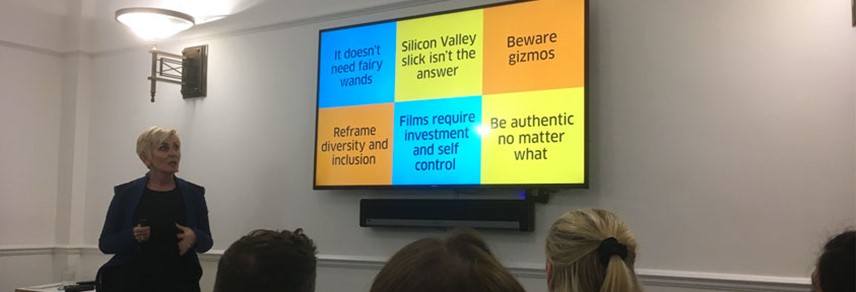
THE BEST AND WORST PRACTICES IN EMPLOYER BRANDING
No company is immune to bad practice in employer brand management. From large Silicon Valley businesses to smaller organisations, the risk of conveying the wrong image of a company’s culture is always looming, and it can affect the business’ reputation in the long run. With examples from both large and smaller businesses, brand consultancy Frank, Bright & Abel examined the problem of authenticity at a recent event.
The need to create clear, transparent, engaging and credible copy and messaging was a dominant and overarching topic, showing the importance of weaving the employer brand into the core of the business itself. “Don’t call it ‘employer brand’ if you plan to separate it from the core brand,” client services director Alison Sato says. “An employer brand must be an extension of your company values, fitting into the overarching purpose.”
Keeping the Silicon Valley employer brands in mind, some tend to overreach, filling their employer brand pages with inefficient digital AI assistants, poor-quality films and spartan inclusivity policies which don’t reflect the company’s core values. The solution is, unsurprisingly, to only invest in an idea when sure to carry it out effectively, be it a film, a digital gadget or a new web design experiment. And, in the absence of dedicated budget, to aim for quality over quantity, by focusing on the strongest aspects of the existing employer brand and bringing them forward.
After sharing a list of eight steps to a strong employer brand – ranging from clarity to positioning, from setting solid principles to avoiding clichés – the speakers proceeded to draw examples from tech and media giants such as Apple and Netflix, showing the way evident flaws can be found in their brands as well.
According to the speakers, a Silicon Valley feel isn’t always the answer; Netflix and Apple still miss a few points, as a first look at their respective employer brands reveals too corporate, unhealthy or elitist workplaces. Although great values may stem from the core of their culture, they don’t come through when looking at the overall employer brand, lacking authenticity and clarity. By contrast, Pinterest’s messaging is fun and engaging, suggesting strong company values and an overall healthy and inclusive workplace.
Even Rentokil Initial can build strong employer brands and company cultures. Rentokil’s copy is authentic, transparent, inclusive and compelling; it engages the reader at every step and lists clear EVP principles for employee reward and care.
The speakers discussed inclusivity, the potential problems of digital gadgets, conscious use of films and how to use characters to deliver messages in the workplace. They concluded with an emphasis on the importance of filtering out clichés and implausible statements. Glassdoor was also mentioned, as a useful tool to monitor a company’s impact and take suggestions on board.
“Whatever you do, be you,” strategy partner at Frank, Bright & Abel Rebecca Price adds. “It is the one thing that nobody can take from you, and if you are going to make an authentic brand, make sure that there’s something compelling underneath.”
For more from Communicate magazine, sign up for the Communicate newsletter here and follow us on Twitter @Communicatemag.
